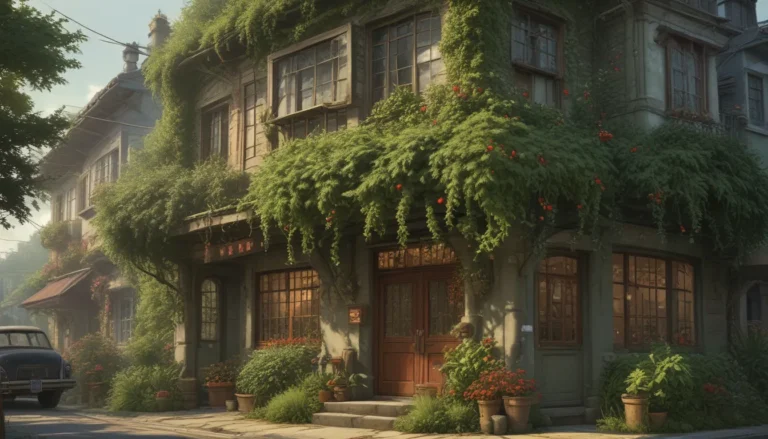How to Cultivate and Nurture Winter Jasmine Plants: A Comprehensive Guide

Are you in search of a plant that blooms vibrantly when others are fading away, offering the beauty of seasonal color with minimal maintenance? Look no further than Jasminum nudiflorum, commonly known as winter jasmine!
Plants that bring light to the gloomy winter months are always treasured. Winter jasmine has been grown for centuries, offering a touch of color to the landscape and supporting pollinators when it blooms in late winter.
In this article, we will delve into the propagation, care, and maintenance of winter jasmine. Whether you are looking for a cascading vine, a ground cover, or a neat border planting, this plant has got you covered.
What Is Winter Jasmine?
Winter jasmine, a member of the olive family, is related to other blooming plants such as lilacs and forsythia. This deciduous shrub is known for its bright yellow star-shaped blossoms that burst open on pinkish-red buds in multiple cycles during mid to late winter.
This species grows well in Zones 6 to 10 and thrives in cool temperatures. Winter jasmine is versatile and can be trained as a cascading vine, a shrub, or an espalier against a structure. It is an excellent choice for erosion control, ground cover, or as a border planting.
Cultivation and History
Winter jasmine was introduced to mainstream popularity in Europe by British plant collector Robert Fortune in the 19th century. It has been cultivated in China for centuries and is known as “Yingchun,” which means the flower that welcomes spring.
This plant grows best in full sun to partial shade, in well-draining sandy loam soil. Winter jasmine won the Royal Horticultural Society’s Award of Garden Merit in 1984 for its winter blooming tendencies and easy maintenance.
Propagation
Propagating winter jasmine can be done through various methods, including seed, cuttings, layering, and transplanting. Seeds can be soaked overnight and planted in well-draining soil. Cuttings can be taken in the fall and rooted in a mixture of coconut coir and sand. Layering involves allowing canes to root where they come into contact with the ground.
Transplanting can be done in the spring, ensuring the plant is placed in a sunny location with loamy soil. Care should be taken to address any root issues before planting.
How to Grow Winter Jasmine Shrubs
Winter jasmine requires minimal maintenance and thrives in loamy, well-draining soil. Plant in full sun to partial shade, water sparingly, and provide support if trained as a vine. Winter jasmine is nontoxic and pet safe, making it a great addition to any garden.
Pruning and Maintenance
Prune winter jasmine in the spring after blooming to shape and rejuvenate the plant. Deadhead branches before they produce berries to control spreading.
Cultivars to Select
A few cultivars of winter jasmine are available, including ‘Aureum,’ ‘Mystique,’ and ‘Nanum.’ These cultivars offer variations in foliage color and growth habits, making them ideal for different landscaping needs.
Managing Pests and Disease
Winter jasmine is relatively pest and disease resistant, with occasional issues from aphids, Japanese beetles, mealybugs, and fungal diseases like leaf blight and rust. Treat infestations with insecticidal soap, neem oil, or beneficial nematodes, and address diseases with fungicides like Mycostop.
Best Uses for Winter Jasmine Plants
Winter jasmine can be grown as a trellised vine, ground cover, hedge, or in containers. It is versatile, requiring minimal maintenance and providing beauty in various landscape settings.
Incorporating winter jasmine into your garden can bring color and interest to the winter months, providing a welcoming touch to your outdoor space.
Quick Reference Growing Guide
- Plant Type: Deciduous flowering perennial
- Flower/Foliage Color: Yellow/green
- Native to: China
- Tolerance: Drought, shade, low nutrients
- Hardiness (USDA Zone): 6-10
- Maintenance: Low
- Bloom Time: Late winter-early spring
- Soil Type: Sandy loam
- Exposure: Full sun-partial shade
- Height: 4 feet (shrub), 15 feet (on trellis)
- Spread: 5-7 feet (shrubs), 10-15 feet (vines)
- Water Needs: Moderate
- Common Pests and Diseases: Aphids, Japanese beetles, mealybugs, fusarium wilt, leaf blight, rust
Sunny Color for Your Winter Landscape
While maintaining any plant requires some effort, winter jasmine stands out for its versatility and low-maintenance nature. With regular pruning, these plants will thrive and brighten up your winters with their vibrant yellow blooms.
Do you have a spot in your garden that could benefit from the beauty of winter jasmine? Share your thoughts in the comments below! If you have any questions, feel free to ask, and we’ll be happy to assist.
Discover more about growing and caring for jasmine plants in our related guides:
- 13 Popular Types of Jasmine Vines and Shrubs
- How to Grow Asiatic Jasmine
- How to Prepare Jasmine Plants for Cold Weather
- How to Prune and Control Asiatic Jasmine Vines





